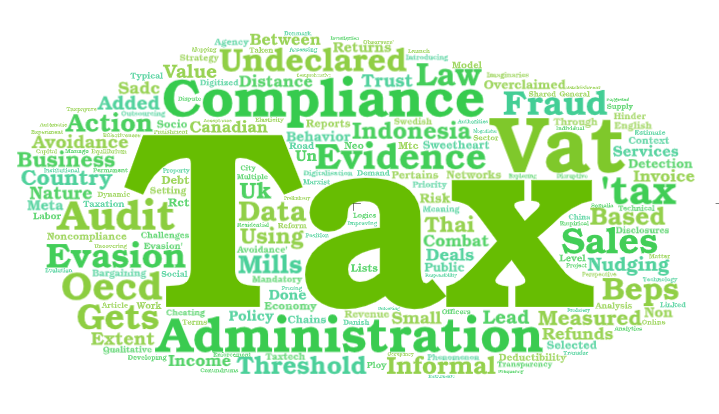An alternative minimum tax (AMT) caps the percentage of taxes that a taxpayer must pay to the government, regardless of how many deductions or credits the taxpayer claims. For taxpayers earning above specified income thresholds, the United States now has an alternative minimum tax.
The AMT recalculates income tax after reincorporating certain tax preferences into adjusted gross income. It employs a distinct set of procedures to compute taxable income after allowable deductions. Preferential deductions are subtracted from the taxpayer’s income to produce the alternative minimum taxable income (AMTI), and the AMT exemption is subtracted to determine the final taxable figure.
The difference between a taxpayer’s alternative minimum taxable income and his AMT exemption is taxed using the relevant rate schedule. This yields the tentative minimum tax (TMT). If the tentative minimum tax is higher than the taxpayer’s regular tax liability for the year, then they pay the regular tax and the amount by which the tentative minimum tax exceeds the regular tax. In other words, the taxpayer pays the full tentative minimum tax.
There are two alternative minimum tax rates, 26% and 28%. For 2022, the 28% rate applies to the excess alternative minimum taxable income of $206,100 or more for all taxpayers ($103,050 for married couples filing separate returns). For 2023, the 28% rate applies to the excess alternative minimum taxable income of $220,700 or more for all taxpayers ($110,350 for married couples filing separate returns). The 26% rate applies to incomes up to those levels.
A taxpayer who has a high income and uses large tax breaks may owe a smaller percentage under the standard rules. If so, the taxpayer is obliged to recalculate the taxes owed under the alternative minimum tax system, which eliminates some of those tax breaks. The taxpayer will owe whichever amount is higher.
For tax year 2022, the AMT exemption for single filers is $75,900. For married joint filers, the figure is $118,100. For tax year 2023, the figures are $81,300 for single filers and $126,500 for married joint filers.
Taxpayers have to complete Form 6251 to see whether they might owe AMT. First, they subtract the exemption amount from their income. If their AMT is less than the exemption, they do not have to pay AMT.
It’s important to note, though, that taxpayers with AMTI over a certain threshold do not qualify for the AMT exemption. For tax year 2022, the phase-out begins at $539,900 for single filers and $1,079,800 for couples filing jointly. For tax year 2023, the phase-out begins at $578,150 for single filers and $1,156,300.
AMT is designed to prevent taxpayers from escaping their fair share of tax liability through tax breaks. However, in the past, the structure was not indexed to inflation or tax cuts. This can cause bracket creep, a condition in which middle-income taxpayers could be subject to this tax instead of just the wealthy taxpayers for whom AMT was invented. In 2012, however, Congress passed a law indexing the AMT exemption amount to inflation.
Calculating AMT
To determine if they owe AMT, individuals can use tax software that automatically does the calculation, or they can fill out IRS Form 6251. This form takes medical expenses, home mortgage interest, and several other miscellaneous deductions into account to help tax filers determine if their deductions are beyond an overall limit set by the IRS.
Read Also: Health Insurance Tax Peculiarities in The USA
The form also requests information on certain types of income such as tax refunds, investment interest, and interest from private activity bonds, as well as numbers corresponding with capital gains or losses related to the disposition of property.
The IRS has specific formulas in place to determine which portion of this income and deductions the tax filers need to note on Form 6251. It uses another set of formulas to determine how these numbers lead to AMTI.
Below are some points to keep in mind concerning the alternative minimum tax.
- The individual alternative minimum tax (AMT) operates parallel to the regular income tax, with different rates and definitions of income and deductions. The AMT grew out of a minimum tax that was first enacted in 1970 after it was revealed that some high-income households had paid no income taxes in prior years. Although it has historically applied to few taxpayers, the tax is projected to grow rapidly over the next decade under current law. In addition to increased complexity, this will create problems for the transparency, equity, and efficiency of the tax code.
- Although the IRS’s National Taxpayer Advocate reported earlier this month that the AMT was the most serious problem faced by taxpayers, President Bush’s 2004 State of the Union address did not mention the AMT. The AMT problem has been a consequence of bipartisan neglect, so the President is not alone in that regard. But the tax cuts that he has championed threaten to double the number of AMT taxpayers after some small temporary fixes expire in 2005, and the President advocates making those tax cuts permanent, which will significantly increase the number of families subject to the AMT over the long term.
- Under current law, AMT coverage will skyrocket. By 2010, the AMT will affect 33 million taxpayers—about one-third of all tax returns—up from 1 million in 1999. This would make the AMT almost as common as the mortgage interest deduction is today. The AMT will be the de facto tax system for households with income between $100,000 and $500,000, 93 percent of whom will face the tax. It will encroach dramatically on the middle class, affecting 37 percent of households with income between $50,000 and $75,000 and 73 percent of households with income between $75,000 and $100,000 (compared to less than 3 percent for each group in 2002).
- The expansion occurs because the AMT is not indexed for inflation and because of the 2001 tax cut. Because it is not adjusted for inflation, AMT liability tends to increase every year, even if real income does not change. At the same time, the tax cut reduces regular income tax liabilities without providing permanent AMT relief. The 2001 tax cut will more than double the number of people subject to the AMT in 2010 (from 14 million to 33 million). If the AMT had been indexed when the regular income tax was and had the 2001 tax cut not been enacted, only about 300,000 households would face the AMT in 2010.
- Making the tax cuts permanent would greatly increase AMT coverage. If the tax cuts were made permanent, a projected 44 million taxpayers would face the AMT in 2014. In contrast, if the tax cuts are allowed to expire as scheduled, “only” 26 million would face the AMT in 2014.
- The AMT masks the true cost of tax cuts. Making the tax cuts permanent would reduce revenue by $330 billion in 2014 if the AMT is not fixed—but in that case, 44 million people would be on the AMT. Protests from unhappy taxpayers are likely to require reform long before that. If the AMT exemption increase were extended and indexed so that only 5 million people faced the AMT in 2014 (compared to 3 million in 2003), then making the 2001 tax cuts permanent would reduce revenues by $435 billion in 2014. The combined cost of the AMT change and making the tax cuts permanent would reduce revenues by $487 billion in 2014—almost 50 percent more than the myopic estimate.
- The AMT raises marginal tax rates. By 2010, the AMT will impose higher marginal tax rates than the regular income tax does for 93 percent of AMT taxpayers. High marginal tax rates encourage tax avoidance and penalize work and saving.
- The AMT is poorly targeted. Although originally intended to curb tax sheltering, the AMT raises less than 5 percent of its revenue from anti-sheltering provisions, such as accelerated deprecation or oil depletion allowances. In 2010, only about 1 percent of AMT taxpayers will be subject to the tax due to anti-sheltering rules. A key reason why the AMT does not target shelters very well is that the preferential treatment for capital gains—the lynchpin of most individual tax shelters—is not curtailed by the AMT.
How do You Determine AMT?
The alternative minimum tax (AMT) ensures that high earners pay at least a minimum amount of federal income tax. It’s like the fail-safe against tax loopholes. Essentially, it requires some taxpayers to calculate their tax liability twice: once under normal tax rules and again under AMT rules. If the second calculation produces a higher tax bill than the first, you’re required to pay the higher AMT.
Calculating AMT is complicated, but thanks to the Tax Cuts and Jobs Act of 2017, it now impacts only a small percentage of taxpayers.
Whether the AMT affects you depends on several factors, including your filing status and the amount and type of your income and deductions. Generally, though, the AMT applies to people with an annual income of $200,000 or more.
The TCJA eliminated the corporate alternative minimum tax for all C corporations starting with the 2018 tax year. It didn’t repeal the AMT for individuals, meaning owners of pass-through businesses, including sole proprietorships, partnerships, LLCs, and S corporations may still have to pay it.
Fortunately, tax reform did increase the exemption amount for tax years 2018 through 2025, making the AMT less likely to hit middle-class taxpayers—at least for a few years. If your income is below your AMT exemption amount, you won’t have to pay the AMT. Otherwise, you may not know whether the AMT applies to you until you calculate your tax bill under both systems.
To calculate the AMT, you’ll use Form 6251. But be forewarned: calculating the AMT is complicated. Tax software will perform the calculation for you, but you may want to understand how the calculations work. Here’s a summary of the steps involved.
1. Start with taxable income
Calculate your taxable income as you would normally, or enter the amount from Form 1040, line 15.
2. Make required adjustments
Next, you’ll have to add back certain items, including taxes deducted on Schedule A, interest from specified private activity bonds, and net operating loss deductions from a business. You can find a full list of AMT adjustments in the Instructions for Form 6251. The result is your alternative minimum taxable income (AMTI).
3. Subtract your AMT exemption
The AMT exemption amounts are like standard deductions for calculating the AMT. For 2022 and 2023, those exemption amounts are:
| Filing Status | 2022 Exemption Amount | 2023 Exemption Amount | —– | —– | | Single | $75,900 | $81,300 | | Married Filing Jointly | $114,600 | $126,500 | | Married Filing Separately | $59,050 | $63,250 | | Head of Household | $75,900 | $81,300 |
4. Multiply the result by your AMT tax rate
While there are seven tax brackets used in the standard federal income tax calculation, there are only two for AMT. For 2023, if your AMTI minus your AMT exemption is $220,700 or less ($110,350 if married filing separately), your AMT tax rate is 26%. Otherwise, it’s 28%.
The purpose of the AMT was to prevent high-income taxpayers from paying less than their share of taxes, so it’s not an easy tax to avoid. If you’re worried about it, you can try to steer clear of the types of income, deductions, and credits that trigger the AMT.
Many of these “red flag” items may not be familiar to the average taxpayer, but a few common ones are:
- High gross income relative to taxable income
- Tax-exempt interest from private activity bonds
- Exercise of incentive stock options
- Long-term capital gains
If you do have to calculate and pay the AMT, your taxes will be more complicated. Fortunately, good tax software or a qualified tax professional can help you figure out whether you need to fill out Form 6251 and calculate your AMT liability.


